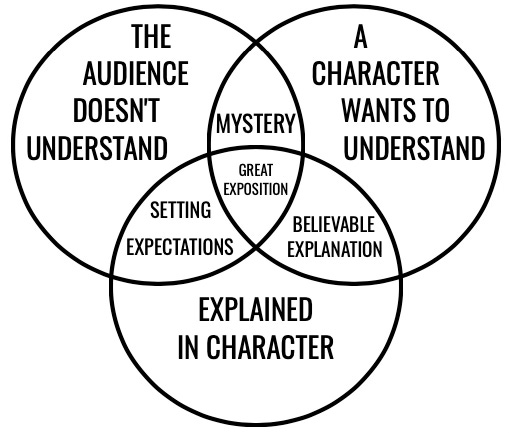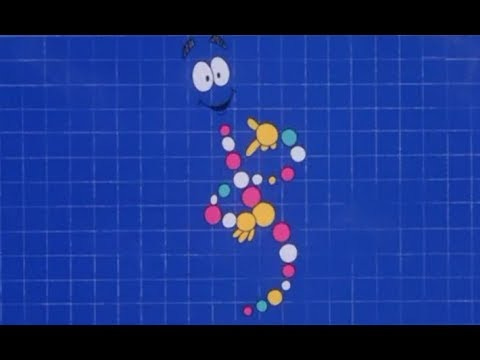
When you have information the audience doesn’t know, but they need to understand to follow the story, that’s exposition. For example this scene from The Terminator:
Kyle Reese is telling a whole lot of things to Sarah Connor in this clip, but it’s not dull.
There’s tension from being pursued through the parking garage
There’s tension because Sarah doesn’t trust Kyle, and he’s saying improbable things
There’s dramatic action happening at the same time as the explaining
Kyle is very, very intense about what he’s saying, because he’s trying to convince Sarah that he is who he says he is, and his mission is important
Stepping back for a broader view on the subject, check out Thomas Flight’s video essay praising great exposition, and breaking down ideas about what showing vs. telling actually means.
For a look at how narratives tease mysteries with their exposition, check out Quest Maker’s look at the worlds of Star Wars and J.R.R. Tolkien.
Consider this famous moment from Jurassic Park, where we learn how the dinosaurs were cloned via Mr. DNA. It’s funny, but it’s also totally in character with how a theme park would explain things to guests, aiming to create a clear enough description of the process that kids from 8 to 80 could understand:
Right before the clip plays, Ellie Sadler asks the question about to be answered by the video, showing how the characters want to know this information. There hasn’t been a clear explanation for the audience yet, and having seen the cloned dinosaurs already, this information is something they’re likely curious about.
And c’mon—Mr. DNA is an oddball mascot whose wiggly animation and unexplainable southern drawl keep all eyes and ears focused on him.
In a collection of scenes from Palm Springs, we see this same playful mystery teasing at play. We see some unexplained things with Nyles being hunted by a man with a bow and arrow, a weird light inside a cave, and Sarah’s confusion at waking up in the same day she just lived yesterday.
Does she desperately want to understand? She demands an explanation and throws beer cans at Nyles. Do we the audience want to understand? If we don’t know the rules they’re playing by, we don’t know what to anticipate. And is it explained in character?
“It’s one of those stable time loop things you may have heard of.”
-Nyles
👋 Are you new here?
Inneresting is a weekly newsletter about writing and things that are interesting to writers. Subscribe now to get more Inneresting things sent to your inbox.
Previously on Inneresting…
In case you missed it, in last issue’s most clicked link One Take explores the way that The Menu uses an unwitting audience of foodies to make the point that real life foodies are also missing the purpose and enjoyment of a good meal:
What else is inneresting?
Sharon Lerner uncovers how 3M convinced a scientist that forever chemicals found in human blood were safe.
Justin Grimmer summarizes the paper he co-authored on why it could take hundreds or even thousands of years to prove that models used to predict the winner of a Presidential election are accurate.
Ann Friedman on Chappell Roan and the ability to simultaneously love the Midwest and leave it.
And that’s what’s inneresting this week!
Inneresting is edited by Chris Csont, with contributions from readers like you and the entire Quote-Unquote team.
Are you enjoying this newsletter?
📧 Forward it to a friend and suggest they check it out.
🔗 Share a link to this post on social media.
🗣 Have ideas for future topics (or just want to say hello)? Reach out to Chris via email at inneresting@johnaugust.com, Mastodon @ccsont@mastodon.art, or Bluesky @ccsont.bsky.social





